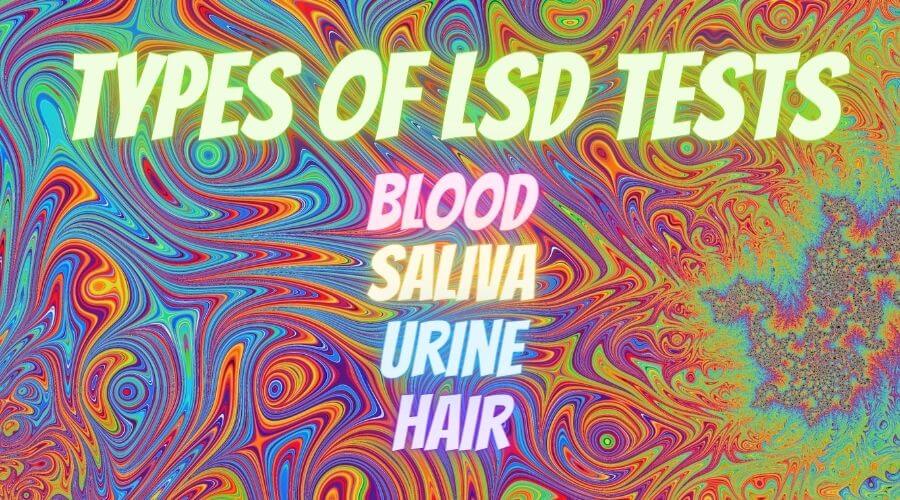How long does LSD stay in your system after you take it? Well, that depends on a variety of factors. Not to mention that you may no longer feel the effects, but your body will retain traces of the drug. Let’s take a look at what we know about LSD and how long it may stay in your body.
KEY TAKEAWAYS
- Lysergic acid diethylamide (LSD) is a powerful hallucinogen that can alter perception, mood, and thought process.
- The effects of LSD are typically felt within 30 to 60 minutes after consumption and can last up to 12 hours.
- Although the mechanisms by which LSD produces its effects are not fully understood, it is thought to work by altering the activity of serotonin, a neurotransmitter in the brain.
- Once LSD enters the body, the liver quickly metabolizes it into several different compounds, including some that are inactive and some that are active.
- The entire process of metabolizing LSD takes about 24 hours.
- So, how long does LSD stay in your system? LSD is metabolized quickly by the liver and is generally undetectable in blood tests after a few hours. However, LSD in urine lasts even up to 5 days.
How Long Can You Feel the Effects of Acid?
Lysergic acid diethylamide, more commonly known as LSD, is a powerful hallucinogen. Under the influence of LSD, people may experience changes in perception, mood, and thought process. The effects of LSD are typically felt within 30 to 60 minutes after consumption and can last up to 12 hours.
Although the exact mechanisms by which LSD produces its effects are not fully understood, it is thought to work by altering the activity of serotonin, a neurotransmitter in the brain. The long-term effects of LSD use are not well understood, but there is some evidence that it may lead to persistent mental health problems.

How Long Does LSD Stay in Your System?
So, how long does LSD stay in your system? LSD is metabolized quickly by the liver and is generally undetectable in blood tests after a few hours. However, LSD in urine lasts even up to 5 days. The length of time that LSD remains detectable in the body depends on a number of factors, including how much of the drug was taken and the person’s metabolism.
How Is LSD Metabolized?
Once LSD enters the body, the liver quickly metabolizes it. Liver enzymes convert LSD into several different compounds, including some that are inactive and some that are active. The active compounds then circulate through the bloodstream until they are eventually excreted in urine. The entire process of metabolizing LSD takes about 24 hours. During that time, the effects of the drug will slowly wear off.
About Microdosing
Microdosing LSD is a popular way to boost productivity and creativity. But how long does LSD stay in your system if you’re microdosing? The short answer is that it depends on a number of factors, including your metabolism and how much LSD you take. Theoretically, smaller doses should be metabolized quicker than larger. But since it’s impossible to say for sure how quick your metabolism works, it’s also impossible to answer that question precisely.
There is a way to test it, though. If you can afford it, you could try testing for LSD after you microdose. We recommend urine tests or hair tests, since they can detect the drug the longest.
What Can Affect How Long LSD Stays in Your System?
Factors that can affect how long LSD stays in a person’s system include their liver function, urinary pH, and body fat percentage. Additionally, people who regularly use LSD may build up a tolerance to the drug, which can cause them to need higher doses to achieve the same effects.
Consequently, it will be detectable in both blood and urine for a longer period of time. Finally, lifestyle habits such as exercise and diet can also affect how quickly a person metabolizes drugs like LSD, so those should be taken into consideration as well when determining how long it may stay in their system.
DID YOU KNOW…
LSD testing is becoming a more common practice in the workplace, as employers are beginning to screen for it in drug tests. If you’re taking LSD, even if it’s only occasionally, make sure to know your rights and remember that there may be consequences for testing positive for the drug. It’s also important to learn about how long LSD stays in your system, so you can make an informed decision about when to take it.
Do Standard Drug Screens Detect LSD?
While LSD is a powerful hallucinogenic drug, standard drug screens do not typically detect it. This is because LSD is not addictive and does not produce the same kind of bodily changes that other drugs do. However, if an employer specifically requests a test for LSD, it is possible to detect the drug in someone’s system. It is still important to be honest with your employer about any drug use. Failure to disclose drug use could result in termination or other disciplinary action.

For How Long Can a Drug Test Detect LSD? (Urine, Blood, Hair, Saliva)
Drug testing is a common way to detect substances in the body, and it’s natural to want to know how soon a drug test can detect LSD. The answer depends on which type of drug test you use and what kind of person you are. The four most common types of drug tests are blood tests, urine tests, saliva tests, and hair follicle tests. Let’s look at each one in more detail.
Blood Tests
Blood tests are considered the most accurate type of drug test because they measure the actual amount of LSD present in the bloodstream. Unfortunately, this type of test is also invasive and expensive. On average, blood tests can detect LSD within two to three hours after its last use.
Urine Tests
Urine tests are less expensive than blood tests, but still provide an accurate measure of how much LSD is present in your system. Urine tests typically take between 24–72 hours after consumption to detect any trace amounts of LSD in your system. They can also detect LSD metabolites.
Saliva Tests
Saliva tests are becoming increasingly popular as they offer a less invasive alternative to blood and urine testing while still providing relatively accurate results. However, they may not be very accurate when it comes to LSD. Some claim they don’t work at all.
Hair Follicle Tests
Hair follicle or hair sample testing is one of the most reliable forms of drug testing, but it can also be one of the most expensive options. Theoretically, hair testing is able to detect drug usage within 90 days prior to the test. It is not clear, though, whether this applies to LSD usage. One study has found out it only detected LSD two out of seventeen times.
Read also: Does LSD stay in the spinal fluid?
The Bottom Line
In conclusion, there is no single answer to: “How long does LSD stay in your system?” There are several variables that could affect this, including the amount consumed by an individual user, their metabolic rate and other health factors such as age or weight, and lifestyle habits like exercise and dieting habits. All of that contributes to how long acid can stay in your system.
Frequently Asked Questions
How Is LSD Metabolized?
Once LSD enters the body, it is quickly metabolized by the liver. The liver enzymes convert LSD into several different compounds, including some that are inactive and some that are active. The entire process of metabolizing LSD takes about 24 hours.
Does the Military Test for LSD?
The military does not typically test for LSD. However, if a service member is suspected of using LSD or other drugs, they may be subject to drug testing. Additionally, some branches of the military (such as the Navy) may randomly test service members for drug use.
Similar Posts:
- LSD on a Drug Test: How Long Does LSD Stay Detectable?
- Do Shrooms Show Up On a Drug Test? How Long Do Shrooms Stay in Your System? Find Out More About Psilocybin Mushrooms
- Half Life of LSD: How Long Does LSD (Half Dose) Stay in Your Bloodstream?
- How to Get LSD Out of Your System? Tips for Sobering Up
- How Long Do Shrooms Stay in Your System? Psilocybin in Drug Tests, Magic Mushrooms Effects & More
- Does LSD Stay in the Spinal Fluid? Is Acid in the Spinal Cord Forever?
- Does the Military Test for LSD? Drug Testing Policy According to the DoD





